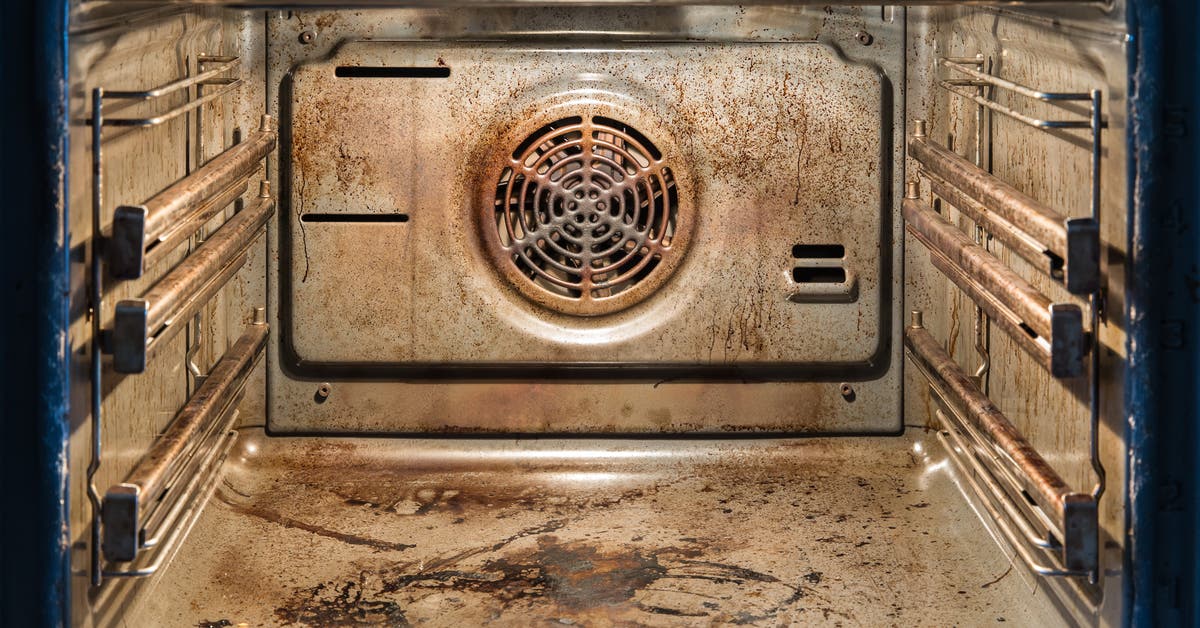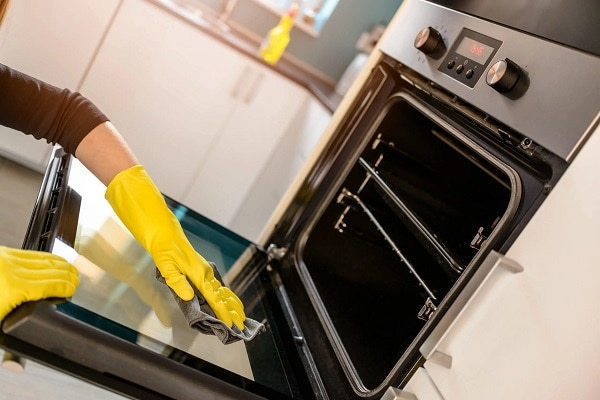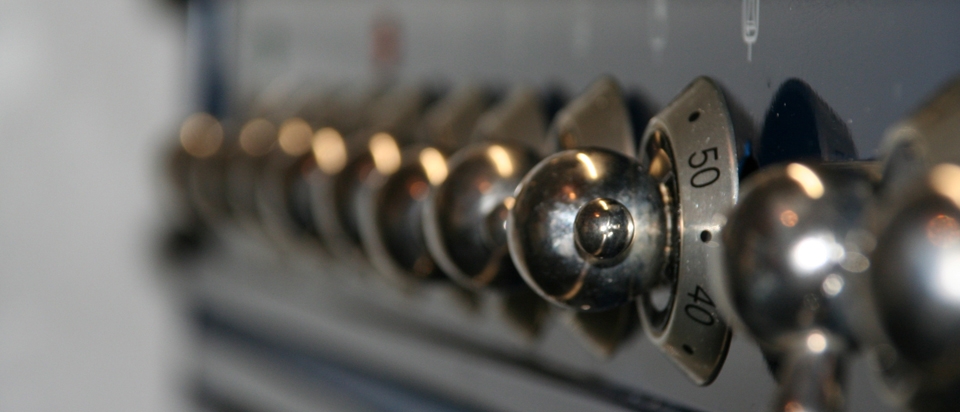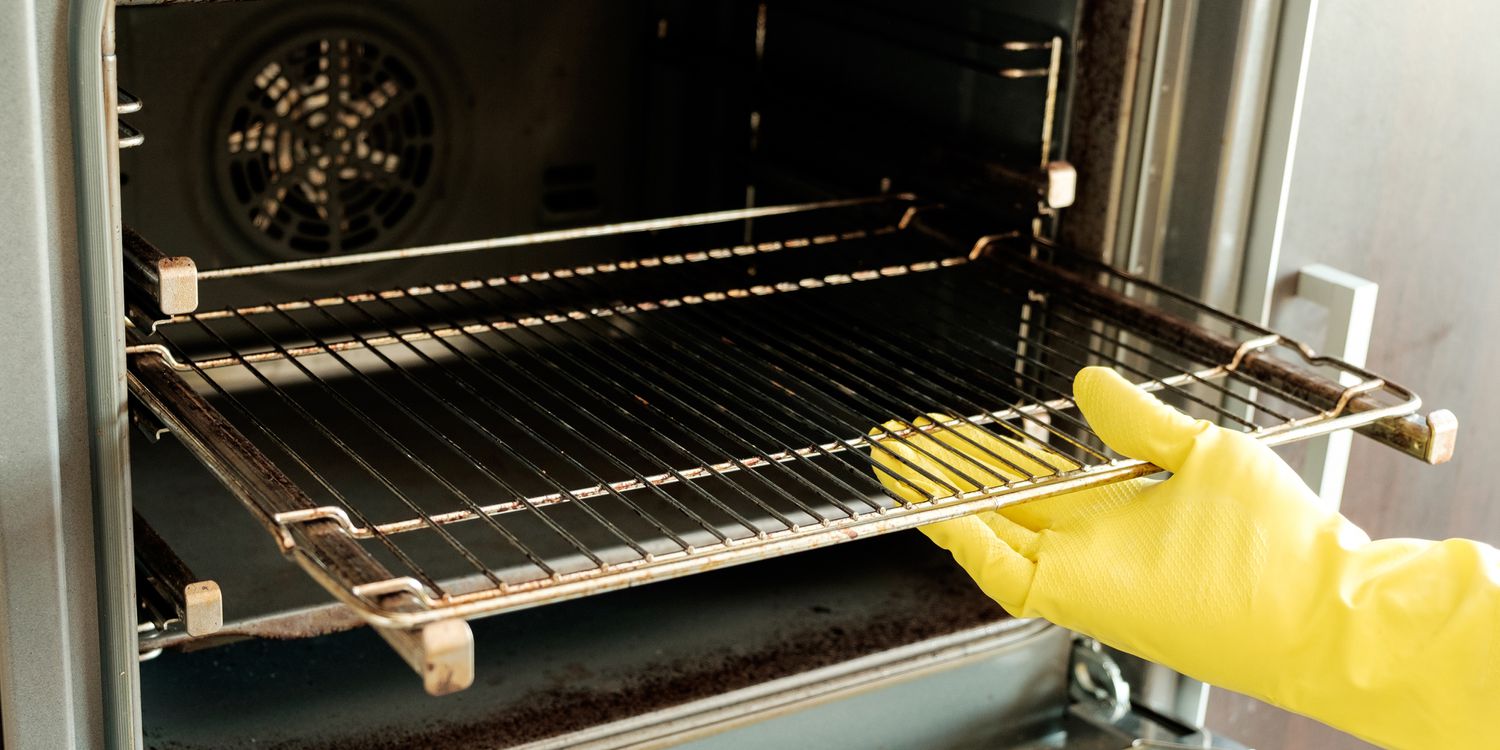What Is A Self-cleaning Oven?

A self-cleaning oven is a type of oven that is designed to clean itself without the need for manual scrubbing or harsh cleaning chemicals. This innovative technology uses high heat to burn off food residue and grease, leaving behind only a small amount of ash that can be easily wiped away. Self-cleaning ovens are equipped with a special cleaning cycle that can be selected to initiate the self-cleaning process. This feature provides convenience and ease of maintenance for oven owners, saving them time and effort in keeping their appliance clean and sanitary.
Explanation Of Self-cleaning Oven Technology
Self-cleaning oven technology is a remarkable innovation that simplifies the cleaning process for oven owners. These ovens are equipped with a special cleaning cycle that utilizes high heat to burn off food residue and grease. During the self-cleaning cycle, the oven compartment reaches extremely high temperatures, typically around 800 to 900 degrees Fahrenheit, which turns any leftover food or spills into ash. This ash can then be easily wiped away once the cleaning cycle is complete. The self-cleaning feature eliminates the need for manual scrubbing and harsh cleaning chemicals, providing convenience and efficiency for users. It is important to follow the manufacturer’s instructions and safety guidelines when utilizing this self-cleaning function to ensure optimal results and minimize any potential risks.
Benefits Of Self-cleaning Ovens
Self-cleaning ovens offer a range of benefits that make them a popular choice among oven owners. One of the main advantages is the convenience they provide. With a self-cleaning oven, users can eliminate the need for manual scrubbing and harsh cleaning chemicals, saving time and effort. Additionally, self-cleaning ovens ensure a more hygienic cooking environment by effectively removing grease and food residue. They also help to maintain the oven’s performance and longevity by reducing the accumulation of debris. Overall, self-cleaning ovens offer a hassle-free and efficient way to keep your oven clean and in optimal condition.
How Self-cleaning Ovens Work

Self-cleaning ovens work by using high temperatures to burn off and remove food and grease residue. The cleaning process typically involves a cycle that heats the oven to extremely high temperatures, usually around 900 degrees Fahrenheit, for a set duration of time, typically 2 to 4 hours. During this cycle, the food and grease residue inside the oven are turned into ash, which can then be easily wiped away once the oven has cooled down. Some self-cleaning ovens also have a seal that helps contain any odors that may be produced during the cleaning process. Overall, the self-cleaning feature provides a convenient and efficient way to maintain the cleanliness of your oven.
Overview Of The Cleaning Process In Self-cleaning Ovens
During the self-cleaning cycle in self-cleaning ovens, the oven is heated to extremely high temperatures, typically around 900 degrees Fahrenheit. This intense heat works to burn off any food and grease residue inside the oven. As a result, the residue is turned into ash, which can easily be wiped away once the oven has cooled down. The duration of the self-cleaning cycle can vary but typically lasts for 2 to 4 hours. This process offers a convenient and efficient way to maintain the cleanliness of the oven without the need for harsh cleaning chemicals.
Temperature And Duration Settings For Self-cleaning Cycles
During the self-cleaning cycle, self-cleaning ovens are heated to extremely high temperatures. The specific temperature and duration settings can vary depending on the model and manufacturer. Typically, self-cleaning cycles can reach temperatures as high as 900 degrees Fahrenheit and can last anywhere from 2 to 4 hours. These high temperatures are necessary to effectively burn off food and grease residues inside the oven. It is important to follow the manufacturer’s instructions and not interrupt the self-cleaning cycle for safety reasons. Always ensure proper ventilation during the self-cleaning process to prevent the buildup of fumes.
Potential Health Risks Of Self-cleaning Ovens

Exposure to fumes and chemicals during the self-cleaning process can pose potential health risks. The intense heat of the self-cleaning cycle can release fumes from residues inside the oven, including grease, food particles, and cleaning agents. Inhaling these fumes can irritate the respiratory system and may cause symptoms such as coughing, wheezing, and difficulty breathing. Additionally, if the oven is not properly ventilated during the self-cleaning process, the buildup of fumes can be more concentrated and pose a greater risk. It is important to take appropriate precautions and ensure proper ventilation when using the self-cleaning feature to minimize these potential health risks.
Exposure To Fumes And Chemicals During The Cleaning Process
During the self-cleaning process, the intense heat of the oven can release fumes from residues inside, such as grease, food particles, and cleaning agents. Inhaling these fumes can pose potential health risks. The chemicals and fumes emitted during the cleaning process can irritate the respiratory system and lead to symptoms like coughing, wheezing, and difficulty breathing. Proper ventilation is crucial to minimize the concentration of these fumes and reduce the associated health risks. It is advisable to follow the manufacturer’s recommendations and ensure proper ventilation when using the self-cleaning feature to protect against potential harm.
Risks Associated With Inhaling Burned Food Particles
Inhaling burned food particles from a self-cleaning oven can pose health risks. When food burns during the cleaning process, it releases smoke and fine particles into the air. These particles can contain harmful substances such as carbon monoxide, volatile organic compounds (VOCs), and other toxic chemicals. Inhaling these particles can irritate the respiratory system, leading to coughing, wheezing, and difficulty breathing. Prolonged exposure to these particles may also increase the risk of respiratory conditions and other health problems. It is important to exercise caution and ensure proper ventilation when using a self-cleaning oven to minimize the inhalation of burned food particles.
Safety Precautions For Using Self-cleaning Ovens

When using a self-cleaning oven, it is important to take certain safety precautions to minimize the potential health risks. One of the key recommendations is to ensure proper ventilation during the cleaning process. Opening windows or turning on exhaust fans can help to remove any fumes and smoke generated during the cycle. It is also essential to follow the manufacturer’s instructions and not leave the oven unattended during the cleaning process. Additionally, wearing protective gloves and avoiding direct inhalation of any fumes or particles can further reduce the risk of potential respiratory irritations. By practicing these safety measures, users can enjoy the convenience of self-cleaning ovens while minimizing associated health hazards.
Ventilation Recommendations When Using The Self-cleaning Feature
When using the self-cleaning feature of your oven, proper ventilation is crucial to minimize the potential health risks. To ensure adequate ventilation, it is recommended to open windows or turn on exhaust fans during the cleaning process. This will help to remove any fumes and smoke that may be generated. It is also beneficial to avoid using the self-cleaning feature when there are individuals with respiratory sensitivities or health conditions present. Proper ventilation will help to create a safer environment and reduce the risk of respiratory irritations or other health issues.
Protective Measures To Minimize Health Risks
To minimize the potential health risks associated with using self-cleaning ovens, it is important to take certain protective measures. First, always read and follow the manufacturer’s instructions carefully to ensure the proper use of the self-cleaning feature. Additionally, avoid overusing the self-cleaning function, as excessive heat and prolonged exposure to high temperatures can increase the risk of fumes and smoke. Furthermore, ensure proper ventilation by opening windows or using exhaust fans to remove any fumes that may be generated during the cleaning process. Lastly, it is advisable to refrain from using the self-cleaning feature when individuals with respiratory sensitivities or health conditions are present. By following these protective measures, you can create a safer environment while using self-cleaning ovens.
Alternative Cleaning Methods For Ovens

There are alternative cleaning methods for ovens that can be used as an alternative to the self-cleaning feature. These methods offer non-toxic and eco-friendly options for keeping your oven clean. One method is to use a baking soda and vinegar paste, which can be applied to the interior of the oven and left to sit for a few hours before scrubbing it away. Another option is to use lemon and water to create a natural cleaning solution. Regular maintenance, such as wiping up spills immediately and using oven liners, can also help prevent the buildup of food debris. By utilizing these alternative cleaning methods, you can maintain a clean oven without relying on the self-cleaning feature.
Non-toxic And Eco-friendly Cleaning Options For Ovens
Non-toxic and eco-friendly cleaning options for ovens are becoming increasingly popular as people seek safer alternatives to the self-cleaning feature. One effective method is to create a paste using baking soda and vinegar. This paste can be applied to the interior of the oven and left to sit for a few hours, allowing the mixture to break down tough stains. Afterward, simply scrub away the residue. Another natural option is to use a combination of lemon and water, which can effectively remove grime and leave a fresh scent behind. Regular maintenance practices, such as wiping up spills immediately and using oven liners, can also help prevent the buildup of food debris. By opting for these non-toxic and eco-friendly cleaning methods, you can maintain a clean oven without any health risks or harmful chemicals.
Tips For Maintaining A Clean Oven Without Using The Self-cleaning Feature
To keep your oven clean without relying on the self-cleaning feature, there are several tips you can follow. First, wipe up spills immediately to prevent them from baking onto the oven surface. Consider using oven liners to catch any drips or spills. Regularly remove and clean oven racks to prevent grease buildup. For stubborn stains, create a paste using baking soda and water, apply it to the stained areas, and let it sit before scrubbing away the residue. Finally, regularly clean the oven door glass using a vinegar and water solution to maintain a clear view. By incorporating these practices, you can keep your oven clean and functional without risk to your health.
Conclusion

In conclusion, while self-cleaning ovens offer convenience and efficiency, they can also pose potential health risks. The high temperatures and chemicals used during the cleaning process can release harmful fumes and particles that may cause respiratory irritation and other health issues. It is important to exercise caution when using the self-cleaning feature and take necessary safety precautions, such as ensuring proper ventilation and protective measures. Alternatively, there are non-toxic and eco-friendly methods available for cleaning ovens. Ultimately, prioritizing health and considering alternative cleaning options can help maintain a clean oven without compromising well-being.
Summary Of Health Risks Associated With Self-cleaning Ovens
Self-cleaning ovens, while convenient, can pose potential health risks due to the high temperatures and chemicals used during the cleaning process. The fumes and particles released during self-cleaning can irritate the respiratory system and cause respiratory problems. Inhaling burned food particles can also be harmful to health. It is important to exercise caution when using the self-cleaning feature and take necessary safety precautions, such as ensuring proper ventilation and using protective measures. Considering alternative cleaning methods and prioritizing health can help maintain a clean oven without compromising well-being.
Guidance On Safe Practices And Considerations For Oven Cleaning
When it comes to cleaning your oven, safety should always be a top priority. Here are some guidance and considerations to ensure a safe cleaning process.
- Read the manufacturer’s instructions: Familiarize yourself with the specific guidelines for cleaning your oven. Each oven model may have different recommendations and safety precautions.
- Use protective gear: Wear protective gloves and goggles to protect your hands and eyes from any cleaning chemicals or debris.
- Proper ventilation: Ensure that the area is well-ventilated during the cleaning process. Open windows or turn on exhaust fans to remove any fumes or odors.
- Choose non-toxic cleaning products: Opt for environmentally friendly and non-toxic cleaning solutions. This reduces the risk of harmful chemicals being released into the air or coming into contact with food.
- Remove racks and accessories: Before cleaning, remove oven racks and other accessories to allow better access to all parts of the oven.
- Take your time: Cleaning an oven can be a time-consuming task. Avoid rushing the process and allow the cleaning solution to sit for the recommended amount of time for maximum effectiveness.
- Test the cleaning solution: Before applying the cleaning solution to the entire oven, test it on a small area to ensure it doesn’t cause any damage or discoloration.
- Regular maintenance: Practice regular oven maintenance by wiping up spills and grease as they occur. This reduces the buildup of grime and makes future cleaning easier.
By following these safe practices and considerations, you can effectively clean your oven while minimizing any potential risks to your health or the environment. Always prioritize safety and take the necessary precautions to maintain a clean and safe oven.
FAQ About Self-cleaning Ovens
Q: What is a self-cleaning oven?
A: A self-cleaning oven is an oven equipped with a feature that uses high temperatures to burn off baked-on food residues and greases, turning them into ash that can be easily wiped away.
Q: Can a self-cleaning oven pose health risks?
A: While using a self-cleaning oven, it is important to ensure proper ventilation as the high temperatures can release fumes from burnt-off residues. These fumes may contain potentially harmful substances, so it is advisable to avoid inhaling them directly.
Q: How can one safely use a self-cleaning oven?
A: To safely use a self-cleaning oven, make sure the kitchen is well-ventilated by opening windows or using an exhaust fan. Remove pets and sensitive individuals from the area during the cleaning cycle. Also, follow the manufacturer’s instructions carefully.
Q: Are there any precautions to take after a self-cleaning cycle?
A: After a self-cleaning cycle, allow the oven to cool completely before wiping away the ash residues. Dispose of the residues properly according to local regulations. It is also recommended to do a quick wipe down of the oven interior to remove any remaining particles.
Q: Are there alternative cleaning methods for ovens?
A: Yes, there are alternative cleaning methods that do not involve high temperatures or fumes. Using natural cleaners like baking soda and vinegar, or commercially available oven cleaners, can effectively clean the oven without the risks associated with self-cleaning cycles.

ToroGrill Canada is excited to share our one-of-a-kind and authentic South American BBQ flavors with the wonderful people of Canada. Our journey began with a passion for bringing South America’s rich and vibrant culinary traditions to a new audience, and we have been dedicated to this mission ever since. Our story is one of inspiration, hard work, and the pursuit of excellence. Every recipe, every ingredient, and every cooking technique has been carefully honed and perfected to ensure that when you take a bite of our food, you experience the true essence of South American BBQ.